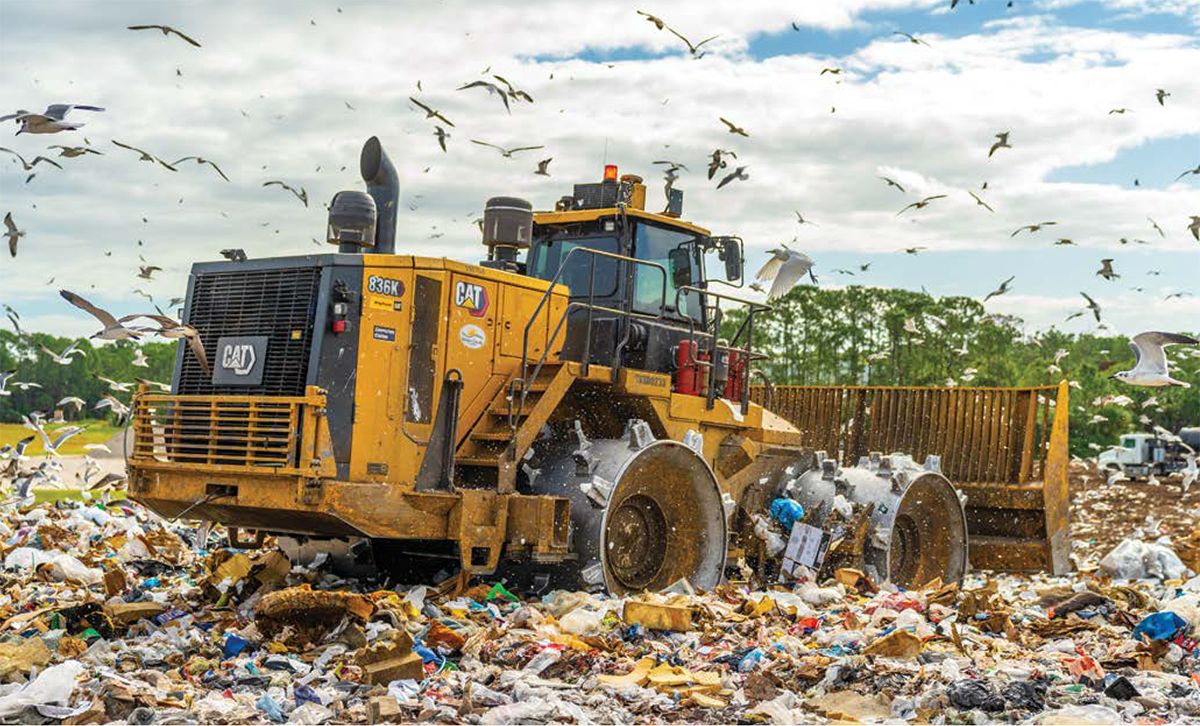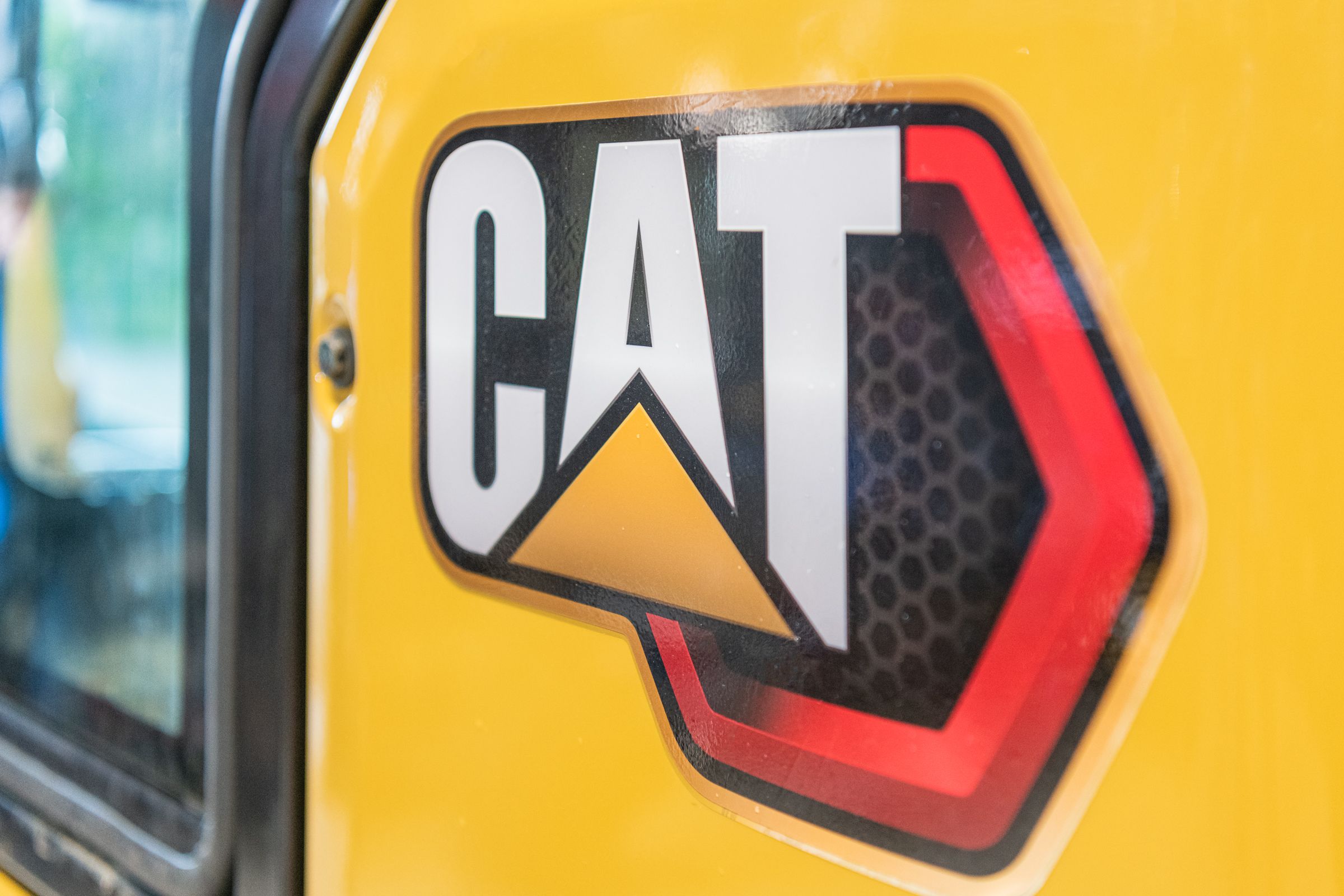

Sign In
Welcome! Sign In to personalize your Cat.com experience
If you already have an existing account with another Cat App, you can use the same account to sign in here
Register Now
One Account. All of Cat.
Your Caterpillar account is the single account you use to log in to select services and applications we offer. Shop for parts and machines online, manage your fleet, go mobile, and more.
Account Information
Site Settings
Security
Next-Gen Tech for a Productivity Boost
This Florida county takes on landfill trash and tough terrains with the high-drive Cat® D6 XE Dozer.
GPS and new Cat® D6 XE Dozers Make Landfill More Productive
Located in east central Florida, Volusia County is home to more than half a million residents. With a total area of 1,432 square miles, including 331 square miles of water, the county includes Daytona Beach, a popular destination for fun-seeking college students on spring break.
Made famous for its wide beach and smooth, hard- packed sands, Daytona Beach became widely known in the early 1900s for high-speed automobile testing, and later, racing. This made the beach a mecca for racing enthusiasts. Today it’s known for Daytona International Speedway, which hosts February’s iconic Daytona 500 NASCAR race.
The Tomoka Landfill in nearby Port Orange encompasses 3,400-acres and dates back to the late 1970s, with a life expectancy until 2029, with future areas designated for up to 100 more years. The landfill takes in 1,500 to 1,800 tons of waste per day, including yard waste.
The yard waste is ground into mulch and spread over a 500-yard expanse as cover material on a daily basis. Three types of Cat® machines play essential roles in the operation of the landfill. Six Cat 725 Articulated Trucks haul mulch and sand then deposit the material on the landfill site. Then Cat D6T and D6 XE Dozers spread the material over waste that has been compacted by a Cat 836K Landfill Compactor.
Meanwhile, a 5,000-gallon Cat 725 Water Truck irrigates the site when necessary to keep the dust down.
The Cat waste handler spec dozers and dependable K-series compactors are all equipped with enhanced guarding packages designed to keep both operator and machine safe throughout the shift, while specialty blades on these machines help move more material in less time.
“It just gives us more options when working the trash,” says Bret LaBram, activity project manager for the Volusia County Solid Waste Division. “If one of our dozers or compactors goes down, we have another machine right behind it with the waste handling package, so it saves us in downtime—not to mention the protection it provides.”
LaBram prefers using Cat 725 Articulated Trucks over scrapers due to their power and their ability to operate in any underfoot conditions and get to places that scrapers can’t reach.
“We use six trucks and they can just about go anywhere,” LaBram says. “With the trucks, you can dump and place your cover more strategically even where it’s wet and muddy. And you’re not having to worry about pushing a scraper out when it gets stuck."
“In the past, I’ve had a couple of different truck brands, and Caterpillar definitely has the haul power over anybody else,” LaBram says. “You’re usually always going uphill with your material and the Cat 725s have a lot of power to take this stuff up where you need it.”

Efficient Compaction
Thanks to its recent adoption of GPS, the county’s Cat 836K can achieve necessary compaction in three efficient passes before moving on to another phase. In use since the beginning of October, the factory-installed GPS system is already paying dividends for Volusia County.
Rather than relying on intuition and guesswork, operators use real-time data from Cat Compaction Control to analyze and deduce when the compaction conforms to specification, ensuring complete coverage and efficient, uniform work, allowing them to move on to the next segment when the work is complete.
“Previously, they were making four or five passes, and they realized they can do it in three, so they’re saving time and fuel and operator expense,” says Paul Valanti, regional manager for Cat dealer Ring Power.
“Before, we were taking handheld readings with a laser to determine if the compaction achieved the proper grade and elevation, and now we can just call the operator on the machine and he gives it right to us,” LaBram says.
The factory-installed GPS system serves several purposes. For the operator, a monitor inside the cab maps where he has been on the landfill along with recording the number of passes. It also indicates when he achieves full compaction.
Real-time information is sent back to the landfill office via VisionLink® to help crews be more precise with how much cover material to layer on so they know how much fill to deposit onto the hill to reach the desired thickness.
“Inside the cab, the operator has a large screen, and he can see where he is on the hill and how much compaction he has achieved with each pass,” Valanti says. “This enables him to view the precise contour of the hill, so that when they go to close it, the hill is at the proper angle and height. It takes all the guesswork out.”
New Cat D6 XE Dozer
This year, Volusia County purchased two new Cat D6 XE machines, the world’s first high-drive electric drive dozer. Next generation technology enables constant power to the ground, greater agility and faster cycle times with up to 35 percent better fuel efficiency than previous models along with reduced maintenance costs.
“When Paul presented it to us, I had already seen an electric drive D7,” LaBram says. “My buddy over at another landfill had nothing but good things to say about it, so when Paul showed us the fuel savings it was a no-brainer.”
Operator Robert Farnell likes the comfort of the new D6 XE.
“I’d say it’s a lot quieter. And it’s a very comfortable machine to run. At the end of the day you feel a lot better."
“What I’ve really noticed is how balanced the machine is, whereas a lot of the other dozers are more nose heavy,” Farnell says. “When you’re backing up between slopes, this machine will hold the slope. I’ve been in some wet conditions where the other machine won’t even hold up on an angle. I don’t know if it’s the lighter motor, but these new Cat dozers are well balanced.”
Farnell adds that the D6 XE provides more pushing power and is smoother to operate.
“Some of the other conventional dozers have an auto downshift where you have to disengage it,” he says. “But this machine just powers right on through most applications—it has much more power."
“With the electric drive motor, when I’m decelerating, I hardly ever touch the brake,” Farnell says. “The decelerator acts as my brake, and it’s all just precise turning, downshifting and shifting. The engine speed never varies. I can change gears with just the flip of a thumb for whatever the application demands.” LaBram says he has always been a fan of high-drive sprockets, noting that in wet conditions the machines track through the mud much better. Also, he says the undercarriage on the high-drive dozer is much easier to clean, while the hydraulic configuration leads to longer track life.

Ongoing Dealer Support
Ring Power has a team of people that are responsible for the landfill, including a field service dispatcher, a heavy equipment manager, a product support and service rep and field service technicians.
The goal is to minimize downtime and keep the Volusia County landfill constantly running.
“They do a great job of following through with us and working through any issues that may come up,” LaBram says.
“The daily volume of waste we take in never stops, so the key is to keep the machines running, and Paul and his crew are there to make sure that happens. Anytime we need them, they respond quickly whenever we call.”



